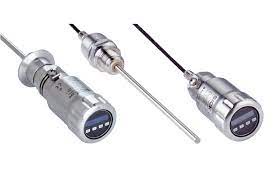In any industry where precise measurement and control of fluid or solid levels is essential, level sensors play a crucial role. They are used for monitoring and regulating levels of various substances in tanks, vessels, and containers, ensuring the smooth operation of a wide range of processes. This comprehensive guide on level sensor technology will give you an in-depth understanding of what level sensors are, the types available, their applications, and the latest innovations in the field.
What are Level Sensors?
Level sensors are devices that measure the level of a substance within a container or system. They can detect the presence or absence of a material, as well as measure the actual level, allowing for automation and control of processes. These sensors use different techniques to detect and measure levels, including mechanical, electrical, and optical means.
Types of Level Sensors
There are several types of level sensors, each with its unique principles and applications. Some of the most common ones include:
Float-Based Level Sensors
Float-based sensors utilize a float, which rises or falls as the level of the substance changes. The position of the float is then converted into an electrical signal, representing the level. These sensors are suitable for continuous or point-level measurement of liquids.
Capacitive Level Sensors
Capacitive sensors measure the level of a substance based on changes in capacitance. These sensors have two plates, one of which is immersed in the substance, and the other is in the air. As the level changes, the capacitance between the plates also changes, allowing for accurate level measurement.
Ultrasonic Level Sensors
Ultrasonic sensors emit high-frequency sound waves that travel through the air, bounce off the surface of the substance, and return to the sensor. The time it takes for the echo to return is used to calculate the distance to the substance, providing a level measurement.
Radar Level Sensors
Radar-level sensors use radio frequency waves to measure the level of a substance. The waves are emitted from an antenna, reflect off the surface, and return to the sensor. The time it takes for the waves to travel back determines the level of the substance.
Optical Level Sensors
Optical sensors rely on the principle of light reflection and refraction to detect levels. They use an infrared light source and a photodetector, which measures the amount of light that is reflected or refracted by the substance.
Applications of Level Sensors
Level sensors are used in various industries and applications, including:
Water and Wastewater Management
Level sensors play a vital role in water and wastewater management, monitoring water levels in reservoirs, water treatment plants, and sewage systems.
Oil and Gas Industry
Level sensors are used in the oil and gas industry to monitor and control the levels of oil, fuel, and other chemicals in storage tanks, pipelines, and processing plants.
Food and Beverage Industry
In the food and beverage industry, level sensors ensure the correct amount of ingredients are used in recipes, monitor the fermentation process, and control the filling of containers.
Chemical and Pharmaceutical Industry
Level sensors are essential for maintaining accurate levels of chemicals and pharmaceuticals during the manufacturing process, ensuring product consistency and quality.
Agriculture and Irrigation
In agriculture and irrigation, level sensors help monitor water levels in tanks and reservoirs, ensuring adequate water supply for crops.
Latest Innovations in Level Sensor Technology
As technology advances, level sensors are becoming more accurate, reliable, and versatile. Some of the latest innovations in the field include:
IoT-Enabled Level Sensors
Internet of Things (IoT) technology allows level sensors to be integrated into a larger network, enabling remote monitoring and control. IoT-enabled level sensors can collect and transmit real-time data to a centralized system or a cloud platform, allowing for more efficient process control and predictive maintenance.
Wireless Level Sensors
Wireless-level sensors eliminate the need for physical wiring between the sensor and the control system, making installation and maintenance more accessible. These sensors use wireless communication protocols, such as Bluetooth or Zigbee, to transmit data, allowing for greater flexibility in sensor placement and reduced installation costs.
Artificial Intelligence and Machine Learning
The integration of artificial intelligence (AI) and machine learning algorithms into level sensing technology allows for more accurate and adaptive level measurements. These advanced algorithms can analyze historical and real-time data to identify trends, predict future levels, and optimize process control.
Non-Contact Level Sensors
Non-contact level sensors, such as radar and ultrasonic sensors, have become more advanced, providing higher accuracy and reliability. These sensors offer the advantage of not requiring direct contact with the substance being measured, reducing the risk of contamination and making them suitable for use in sterile or hazardous environments.
Multivariable Level Sensors
Multivariable level sensors are capable of measuring multiple parameters simultaneously, such as level, temperature, and pressure. These sensors can provide more comprehensive data, allowing for better process control and optimization.
Miniaturization
Advancements in microelectronics and materials have led to the development of smaller, more compact level sensors. These miniaturized sensors can be easily integrated into tight spaces or smaller systems, expanding their range of applications.
Smart Level Sensors
Smart level sensors come equipped with built-in diagnostic capabilities, providing continuous feedback on sensor performance and the overall system's health. This feature enables timely maintenance, reducing the risk of system failure and increasing the sensor's overall lifespan.
Energy-Efficient Level Sensors
The development of energy-efficient level sensors addresses the growing demand for sustainable and environmentally friendly solutions. These sensors consume less power during operation, reducing their overall energy consumption and contributing to a greener industry.
Conclusion
Level sensor technology has come a long way, with constant advancements and innovations making these devices more accurate, reliable, and versatile. From IoT-enabled sensors to AI and machine learning integration, level sensors are playing a crucial role in optimizing processes and ensuring the smooth operation of various industries. As technology continues to advance, we can expect further improvements in level sensor capabilities, expanding their applications and revolutionizing industries worldwide.


No comments yet